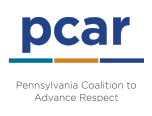The Covid-19 pandemic created a vast amount of problems for all people around the world. As Americans race to respond to the ever-changing landscape of the virus, we find ourselves living a lifestyle that is isolating and cut off from the services we are normally able to access. That makes the risk factors for sexual harassment, abuse, and assault among people with disabilities are greater during this Covid-19 pandemic. Not only are people potentially more dependent upon people who abuse them for help during this time, social isolation limits contact with other social and emotional supports. This is a difficult time as the world battles and shields itself from Covid-19—one that requires a creative approach to reach some of the most marginalized in our community, especially survivors with disabilities.
Get Connected
Connecting with self-advocates in your area is a great start to addressing and understanding the needs of people with disabilities in your community. They will have a better idea of what services are or aren’t needed for the community. This is an opportunity to check in with the people in your community who you are trying to reach and to understand how rape crisis centers can best support people with disabilities (Pennsylvania Coalition Against Rape, 2019). Before you can meet the need, you have to know what the needs are. Focus questions on asking the community you are trying to reach about what it is that they need, what are the things they want, and how can sexual assault centers support them and their community.
Another way to get connected is to reach out to local organizations who work with people with disabilities. For example, day programs, residential programs, Adult protective services, etc. A great way to start communication with local organizations is to check in on how they are handling the crisis and how they would like to be contacted during this time (CALCASA & Just Detention International, 2020, 48:39). Also asking them, “How can rape crisis centers be helpful to you during this time?” and “Are there ways we can work together to meet the needs of survivors with disabilities?”
Re-programming Programming: Contact Free Programing
So often we think of sexual violence awareness and prevention programming as an in-person service. Now that we are living in a contact-free world, we are forced to re-imagine how we can provide prevention education to people in our community. One way could be recording the prevention program or a message for those in your community. This could be hosted on your social media page or put onto a DVD or flash drive. A good topic could be healthy relationships and consent. The recording can include information about the center, services the center provides and how they can contact you.
Check, check 1, 2
Checking to see what technology resources are available for survivors is extremely important during this time. Not all residential homes have technological resources, such as tablets, laptops, or internet connections. Also, remember to acknowledge the way poverty and ableism intersect; for example some technology resources are not affordable to survivors with disabilities. Privacy and confidentiality should be considered when using technology; will the survivor have access to technology in a confidential manner.
Some questions to ask are: Will they have to depend on others? How will confidentiality be applied in certain situations? In some situations, we have to be even more creative when providing services when technology isn’t the answer.
Community Care
During this time, so much of what people need is beyond the traditional role of a sexual assault advocate. It falls, more so, within the role of community care agent, which involves examining the areas in your community that could better support people with disabilities and then finding creative and supportive ways to meet those needs. This is also a great way to conduct outreach to people in the community. Reach out to community partners to learn how they are connecting with the community during this time. Consider ways to collaborate to meet needs, and establish referral processes, if you don’t already have them in place.
Even though this list is focused on outreach towards people with disabilities, the same innovations can be applied to provide services for other marginalized communities such as older adults.
Additional Resources
- Supporting Survivors with IDD
- Sustaining Services for Survivors with Disabilities During COVID-19
- Moving at the Speed of Trust: Disability Justice and Transformative Justice
- Disability Justice & SVPP Webinar Series
- To collaborate with your peers and find more resources, join and stay tuned to the PA Center Resources Online Community.
Also, stay tuned to state partners who can offer insight into the needs of people with disabilities during and after Covid-19.

